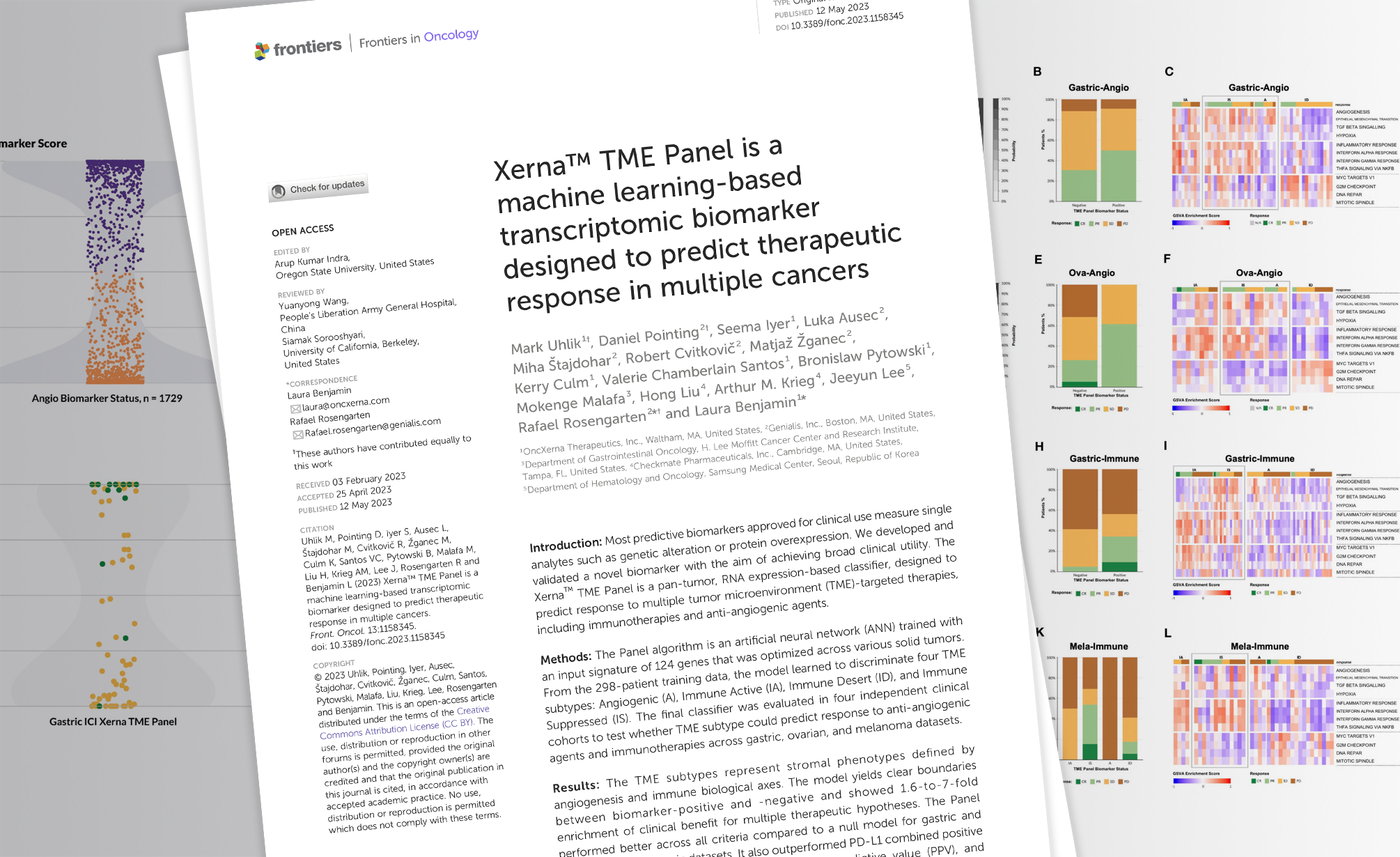Abstract:
Most predictive biomarkers approved for clinical use measure single analytes such as genetic alteration or protein overexpression. We developed and validated a novel biomarker with the aim of achieving broad clinical utility. The Xerna™ TME Panel is a pan-tumor, RNA expression-based classifier, designed to predict response to multiple tumor microenvironment (TME)-targeted therapies, including immunotherapies and anti-angiogenic agents.
The Panel algorithm is an artificial neural network (ANN) trained with an input signature of 124 genes that was optimized across various solid tumors. From the 298-patient training data, the model learned to discriminate four TME subtypes: Angiogenic (A), Immune Active (IA), Immune Desert (ID), and Immune Suppressed (IS). The final classifier was evaluated in four independent clinical cohorts to test whether TME subtype could predict response to anti-angiogenic agents and immunotherapies across gastric, ovarian, and melanoma datasets.
The TME subtypes represent stromal phenotypes defined by angiogenesis and immune biological axes. The model yields clear boundaries between biomarker-positive and -negative and showed 1.6-to-7-fold enrichment of clinical benefit for multiple therapeutic hypotheses. The Panel performed better across all criteria compared to a null model for gastric and ovarian anti-angiogenic datasets. It also outperformed PD-L1 combined positive score (>1) in accuracy, specificity, and positive predictive value (PPV), and microsatellite-instability high (MSI-H) in sensitivity and negative predictive value (NPV) for the gastric immunotherapy cohort.
The TME Panel’s strong performance on diverse datasets suggests it may be amenable for use as a clinical diagnostic for varied cancer types and therapeutic modalities.
Published in Frontiers in Oncology (May 2023)
Mark Uhlik1, Daniel Pointing2, Seema Iyer1, Luka Ausec2, Miha Štajdohar2, Robert Cvitkovič2, Matjaž Žganec2, Kerry Culm1, Valerie Chamberlain Santos1, Bronislaw Pytowski1, Mokenge Malafa3, Hong Liu4, Arthur M. Krieg4, Jeeyun Lee5, Rafael Rosengarten2, Laura Benjamin1
1 OncXerna Therapeutics, Inc., Waltham, MA, United States
2 Genialis, Inc., Boston, MA, United States
3 Department of Gastrointestinal Oncology, H. Lee Moffitt Cancer Center and Research Institute, Tampa, FL, United States
4 Checkmate Pharmaceuticals, Inc., Cambridge, MA, United States
5 Department of Hematology and Oncology, Samsung Medical Center, Seoul, Republic of KoreaYour Content Goes Here

